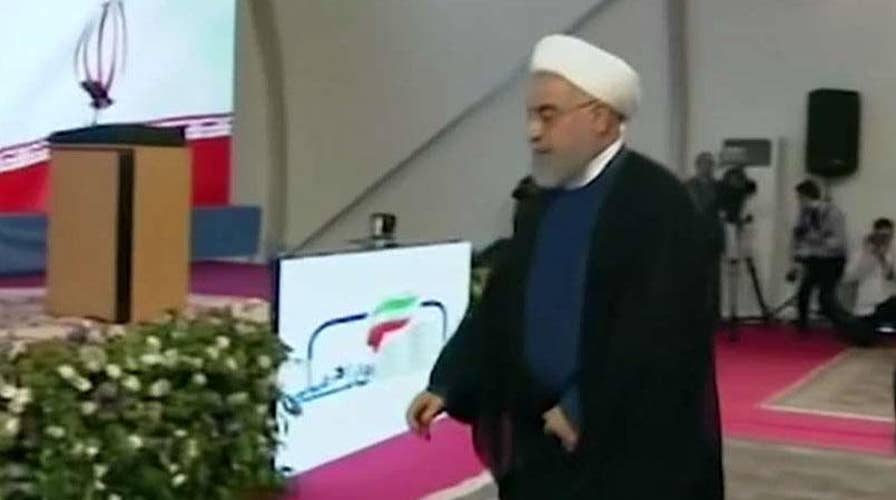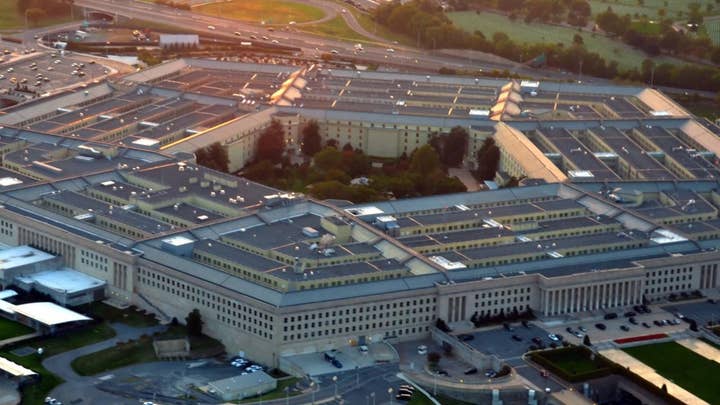Iran makes an about-face on potential talks with the US
Iranian President Hassan Rouhani says he will not meet with the U.S. until all sanctions imposed on Tehran are lifted; Trey Yingst reports from Jerusalem.
A report from the United Nations atomic watchdog says Iran continues to stockpile low-enriched uranium beyond the limitations outlined in the 2015 nuclear deal, The Associated Press reported Friday.
The confidential report by the International Atomic Energy Agency (IAEA), which AP said it had seen, says that Iran is enriching uranium with an up to 4.5 percent concentration of the isotope Uranium-235, above the 3.67 percent allowed by the Joint Comprehensive Plan of Action (JCPOA). The higher level is enough to help power the Bushehr reactor, Iran's only nuclear power plant.
The violations were announced by Iran and confirmed by the IAEA last month, and are meant to put pressure on the signatories to the JCPOA — Great Britain, France, Germany, China and Russia — to provide more economic incentives to Tehran. So far, the major powers in the JCPOA have expressed concern about Tehran's violations and urged the country to return to the limitations set in the agreement but haven't taken further action.
The report added that Iran has continued to permit its inspectors to monitor its nuclear facilities and has also remained under the limit of 130 tons (143.3 U.S. tons) set on its stockpile of heavy water, with 125.5 tons (138.34 U.S. tons) stockpiled.
It said Iran's stock of low-enriched uranium hit 241.6 kilograms (532.64 pounds) as of Aug. 19. The JCPOA cap is 202.8 (447.1 pounds) kilograms of enriched uranium.
The stockpile is made up of 216.5 kilograms (477.3 pounds) of uranium enriched up to 3.67 percent, and 25.1 kilograms (55.34 pounds) of uranium enriched up to 4.5 percent, the IAEA reported.
In the IAEA's previous quarterly report, the organization noted In addition, Iran installed “up to 33 IR-6 centrifuges used to enrich uranium and said that 10 have now been tested. Under terms of the nuclear deal, Iran is allowed to test no more than 30 of the IR-6s once the deal has been in place for eight and a half years. The deal is murky about limits before that point, which will arrive in 2023.
President Trump pulled out of the nuclear deal last year, increasing tensions between Washington and Tehran. Under the weight of U.S. sanctions, the value of Iran's currency has plummeted by about 60 percent in the last year. Inflation is up 37 percent and the cost of food and medicine has soared 40 percent to 60 percent, according to European Union figures.
CLICK HERE FOR THE FOX NEWS APP
Trump said Monday there's a "really good chance" that he would meet with Rouhani after French President Emmanuel Macron initiated the idea of bringing the two nations to the table for talks.
Still, Rouhani and Trump remain at an impasse on lifting sanctions and renegotiating a deal, with the Iranian president saying Tuesday that "without the U.S.' withdrawal from sanctions, we will not witness any positive development."
The Associated Press contributed to this report.


